When you think of leather, what comes to mind? A rugged leather jacket, a timeless handbag, or perhaps a plush leather chair that gets better with age? Whatever your project, understanding the difference between full-grain and top-grain leather is crucial. These two types of leather are often confused, but each has its own set of advantages and challenges, depending on what you’re looking to create.
Full-grain leather is considered the best quality for its durability, unique character, and aging process. Top-grain leather, while more refined and smoother, offers a balance of quality and affordability. Which leather is best for your project depends on your goals, whether it’s longevity, cost, or aesthetics.
Imagine you’re designing a custom leather bag or a high-end piece of furniture. The decision between full-grain and top-grain leather will affect everything from durability to cost. Let’s dive into the specifics of each type to help you make the right choice for your project.
What is Full-Grain Leather?
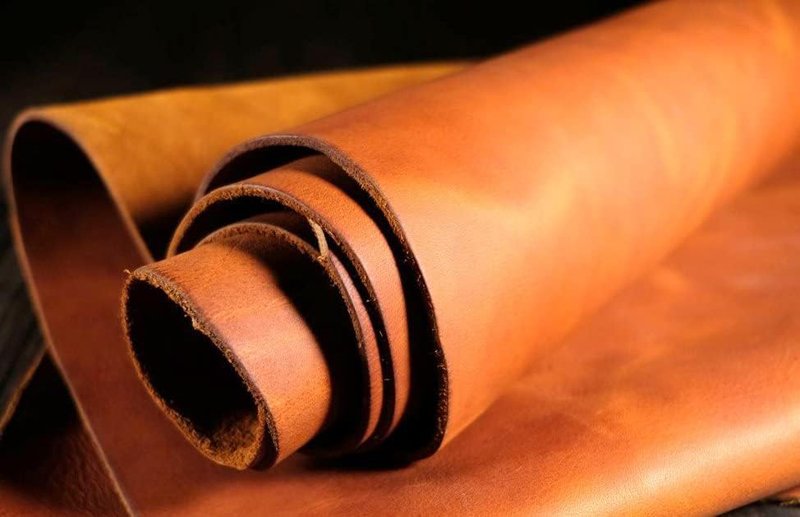
When it comes to leather, full-grain leather is the gold standard. It’s made from the highest quality hide,flawless, blemish-free, and left as natural as possible. What does this mean for you? Well, it means that the leather hasn’t been altered with sanding or buffing, so it keeps all the natural textures and characteristics that make it truly unique.
Why do we believe full-grain leather is the best? Simply put, it’s because this type of leather preserves all the natural oils and properties from the hide. These oils help the leather develop a rich, beautiful patina over time, making each bag or jacket more unique and personalized as it ages. Plus, it’s super strong and durable,perfect for bags, furniture, or anything that needs to stand the test of time.
Why Full-Grain Leather is Awesome
- Super durable: Because it’s made from the whole hide without being altered, full-grain leather can take a beating. It’s tough and will last for years, even getting better with age.
- Develops character: Over time, full-grain leather develops a patina that tells the story of its use. The more you use it, the more beautiful it becomes.
- Quality you can trust: It’s the go to leather for high-end products like premium bags, furniture, and luggage. Take a look at our Szoneier leather Tote or Szoneier Leather Backpack, these items only get better the longer you use them.
The only downside? Full-grain leather is usually a bit pricier, but trust us, it’s worth the investment. Whether it’s our Szoneier Leather Duffle or Szoneier Leather Briefcase, full-grain leather can handle anything life throws at it,road trips, daily commutes, and years of adventures.
What is Top-Grain Leather?
Now, let’s talk about top-grain leather, this is the second-best leather you can get, and it’s what you’ll most commonly see in handbags and wallets where a perfect, smooth look is key. It’s made from the top layer of the hide but goes through more processing than full-grain leather to remove imperfections.
Why is it different? Well, top-grain leather is typically sanded and buffed to remove any natural flaws, like scars or blemishes. This gives it a smooth, sleek look, which is why it’s such a popular choice for bags and accessories where appearance matters.
Why Top-Grain Leather is Great
- Sleek and polished: Top-grain leather has a smooth, uniform texture, which makes it a go-to for those looking for a refined, flawless appearance.
- Durable, but not as tough as full-grain: While it’s still strong and can last for years, top-grain leather doesn’t develop the same deep, rich patina that full-grain does. But it’s a great option if you want something that looks brand new for longer.
- Affordable: It’s more affordable than full-grain leather, which makes it a great choice if you’re looking for a high-quality leather product without the higher price tag.
Top-grain leather isn’t quite as rugged as full-grain, but it’s still durable, reliable, and looks fantastic. It’s the perfect choice for everyday accessories like wallets, belts, and even certain types of jackets.
Full Grain vs Top Grain Leather:Origin Difference
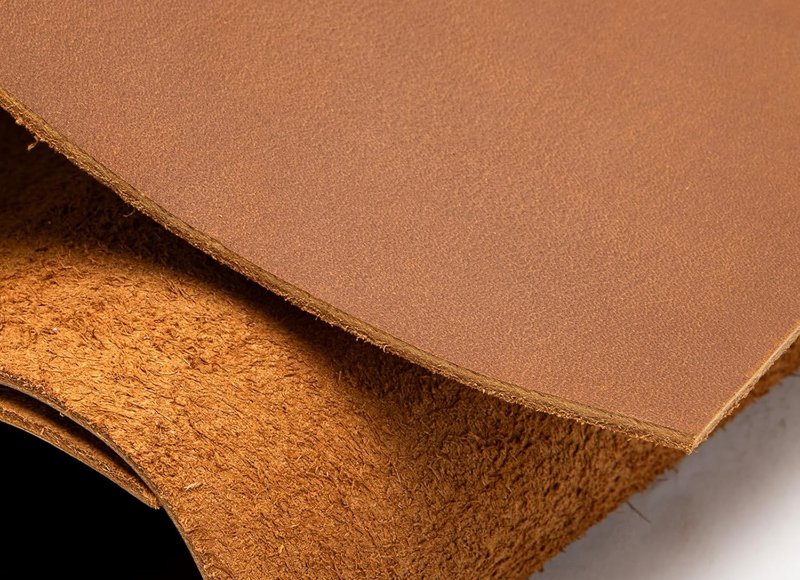
Full-grain leather comes from the top, unaltered layer of the hide, while top-grain leather is produced by removing imperfections from the hide’s surface for a more uniform appearance.
Where Does Full Grain Leather Come From?
Full-grain leather is derived from the outermost layer of the animal hide, the thickest and most durable part. It is left in its natural state, with no sanding or polishing to remove imperfections. This means every full-grain leather product has its own distinct markings, such as scars or wrinkles, which give it a natural, rugged look.
Key Points:
- Origin: Top layer of the hide
- Processing: Minimal processing, retaining natural features
- Appearance: Unique imperfections (scars, wrinkles)
- Uses: Premium products like luxury bags, high-end furniture, saddlery
Where Does Top Grain Leather Come From?
Top-grain leather is made by splitting the hide into layers and removing the topmost part (which is where the full-grain leather comes from). This layer is then sanded and smoothed to eliminate natural imperfections, resulting in a more uniform surface. While it’s still high-quality leather, it doesn’t have the same level of authenticity or durability as full-grain leather.
Key Points:
- Origin: Second layer of the hide
- Processing: Sanded and polished to remove imperfections
- Appearance: Smoother, more uniform surface
- Uses: Upholstery, fashion accessories, lower-cost products
Comparison Table: Full Grain vs Top Grain Leather
| Leather Type | Origin & Process | Key Features |
|---|---|---|
| Full Grain | From the top, unaltered layer of the hide | Tough, durable, retains natural marks |
| Top Grain | Split from the hide, imperfections removed | Smoother, uniform finish, more refined |
Appearance: Full Grain vs Top Grain Leather
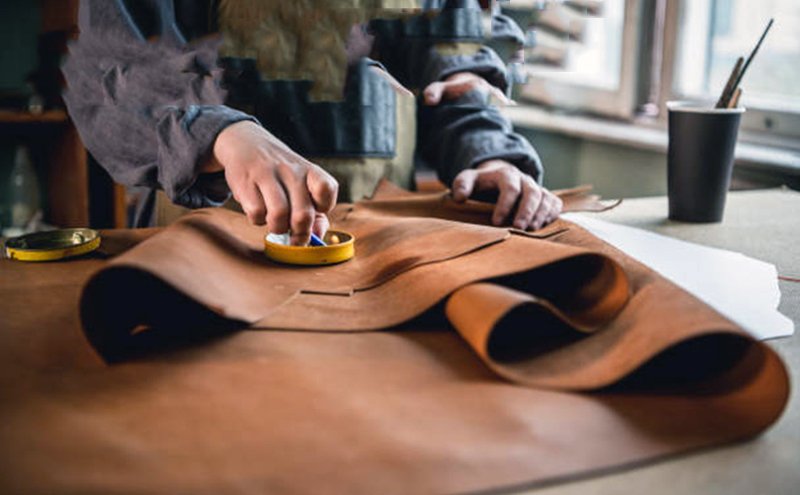
Full-grain leather has a more rugged, natural look with visible marks and imperfections, while top-grain leather is more refined, with a smooth and uniform appearance.
What Does Full Grain Leather Look Like?
Full-grain leather is prized for its unique texture. Because it’s minimally processed, you can expect to see natural imperfections like scars, insect bites, and stretch marks. These imperfections are a testament to the leather’s authenticity and strength. Over time, full-grain leather will develop a beautiful patina, which enhances its color and texture, making it even more attractive as it ages.
This is perfect if you’re going for a vintage or rustic look. For example, full-grain leather is often chosen for high-end furniture because it gives the piece a natural, timeworn appearance that only improves with age.
How Does Top Grain Leather Look?
Top-grain leather is refined and smooth to the touch. The surface is buffed to remove imperfections, giving it a polished and uniform look. This makes top-grain leather a great choice for items where appearance matters but without the desire for the raw, rugged look of full-grain. Top-grain leather is often used in designer bags, jackets, and accessories because it looks sleek and modern.
Full Grain vs Top Grain: Which Leather is More Long-Lasting?
Full-grain leather is more durable and resistant to wear, while top-grain leather, although still strong, is more prone to showing signs of wear and tear.
How Durable is Full Grain Leather?
Full-grain leather is the most durable leather type. Because it’s the thickest part of the hide and has minimal processing, it’s naturally more resistant to wear and tear. It can withstand rough handling and daily use over many years without losing its integrity. Full-grain leather products often last 10-20 years or more with proper care.
Key Durability Benefits:
- Highly resistant to scratches and scuffs
- Ages beautifully with a rich patina
- Long-lasting, often lasts for decades
Is Top Grain Leather Durable?
Top-grain leather is also durable, but it’s more prone to wear over time. The sanding and refinishing process remove some of the natural strength of the leather, so while it will last for many years, it doesn’t quite have the longevity of full-grain leather. However, top-grain leather is still stronger than most other leathers and is often used in products that don’t undergo intense daily use, such as fashion bags or light jackets.Top-grain leather products typically last 5-10 years depending on use and care.
Key Durability Benefits:
- Still highly durable but not as long-lasting as full-grain
- More prone to visible signs of wear over time
- A great option for products that don’t require the absolute highest durability
Does Full Grain Leather Age Better Than Top Grain?
Full-grain leather gets better with age, developing a rich patina that adds to its appeal. Top-grain leather, while durable, doesn’t age as dramatically.
Does Full Grain Leather Scratch Easily?
No, full-grain leather doesn’t scratch easily because of its toughness. However, it develops a patina over time, which is a gradual change in color and texture as the leather absorbs oils and wears naturally. This aging process adds to the beauty and uniqueness of the leather.
Can Full Grain Leather Get Wet?
Full-grain leather is resistant to water to some extent, but it’s not entirely waterproof. If it gets wet, it should be dried carefully to avoid watermarks or damage. Over time, full-grain leather becomes more resistant to moisture, especially as it forms a patina.
Full Grain vs Top Grain: Which Leather Offers the Best Value?
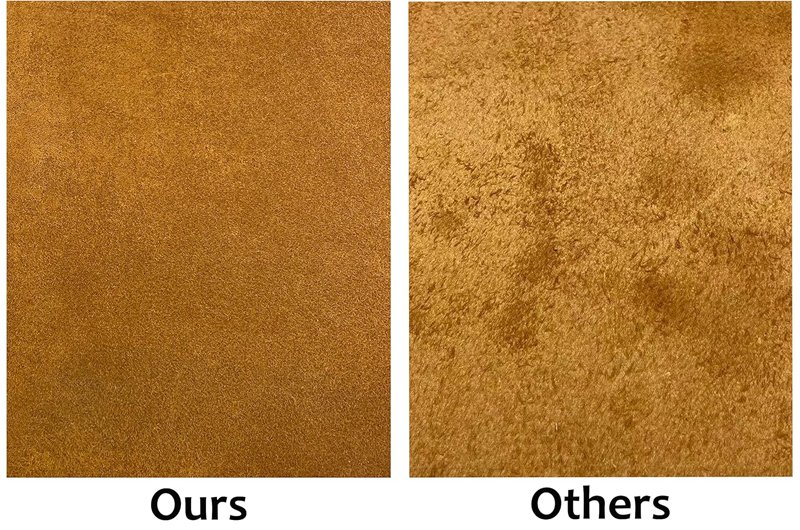
Full-grain leather is the most expensive option due to its premium quality, while top-grain leather is more affordable but still offers a high-quality finish.
What is the Cost of Full Grain Leather?
Full-grain leather is the most expensive type because it is the highest quality, takes the longest to process, and is made from the best part of the hide. Expect to pay anywhere from $200 to $500+ for full-grain leather bags or furniture pieces. The price reflects its durability, unique characteristics, and long lifespan.
How Much Does Top Grain Leather Cost?
Top-grain leather is more affordable than full-grain, generally costing 20-30% less. The cost varies depending on the thickness and type of product, but it’s typically in the range of $100 to $300 for bags, jackets, or furniture.
How Do You Maintain Full Grain vs Top Grain Leather?
Both full-grain and top-grain leather require care, but full-grain leather requires a little more attention to keep it in top condition, while top-grain leather is easier to maintain with its uniform finish.
How Long Does Full Grain Leather Last?
Full-grain leather can last a lifetime with proper care. It can last up to 50 years or more with proper conditioning and cleaning. Its ability to develop a rich patina over time adds to its lasting appeal.
1. Full Grain Leather Maintenance
Full-grain leather is known for its rugged, natural texture, which develops a beautiful patina over time. However, this same texture means it’s more susceptible to moisture and dirt, which can cause damage if not properly cared for. Here are some key steps to maintaining full-grain leather:
Cleaning
- Use a soft cloth: Avoid abrasive cloths or brushes. Simply wipe down your leather with a soft, damp cloth to remove dirt or dust.
- Leather cleaner: For deeper cleaning, use a leather cleaner specifically formulated for full-grain leather. Never use harsh chemicals or household cleaners, as they can dry out the leather.
Conditioning
- Leather conditioner: Full-grain leather can dry out faster than top-grain leather, so conditioning is essential. Use a good-quality leather conditioner every 4-6 months to keep the leather supple and prevent cracking.
- Apply in moderation: Too much conditioner can make the leather greasy, so apply a small amount and buff it in with a clean cloth.
Protection
- Waterproofing: Full-grain leather is not as resistant to moisture as top-grain leather, so it’s essential to apply a waterproofing spray. Make sure the product is designed for leather and follow the instructions carefully.
- Avoid direct sunlight: Full-grain leather can fade and dry out when exposed to direct sunlight for long periods. Store items in a cool, dry place away from sunlight.
Storing
- Use dust bags: When not in use, store full-grain leather items in a dust bag or box to prevent them from getting dirty or scratched.
- Maintain shape: For items like bags or shoes, stuff them with tissue paper or a shoe tree to help them keep their shape.
2. Top Grain Leather Maintenance
Top-grain leather has been processed to remove imperfections, making it smoother and more uniform. While it is still a high-quality material, it requires a slightly different maintenance approach due to its smoother surface and increased resistance to wear and tear.
Cleaning
- Dust and wipe down regularly: Since top-grain leather is smooth, it tends to attract dust and dirt. Use a soft, dry cloth to regularly dust off your leather items.
- Mild soap and water: If you need a deeper clean, mix a small amount of mild soap with warm water and use a soft cloth to gently wipe the surface. Make sure to avoid soaking the leather.
Conditioning
- Use a light conditioner: Top-grain leather doesn’t dry out as quickly as full-grain leather, but it still benefits from conditioning. Use a light conditioner once or twice a year to maintain its softness and prevent it from becoming stiff.
- Buff after applying conditioner: Always buff the leather with a clean cloth after conditioning to ensure an even finish and avoid a greasy look.
Protection
- Water resistance: While top-grain leather is more resistant to moisture than full-grain leather, it’s still a good idea to apply a leather protector or water-repellent spray. This will help protect against spills and stains.
- Avoid harsh sunlight: Like full-grain leather, top-grain leather should also be kept away from prolonged exposure to direct sunlight, which can cause fading or drying.
Storing
- Keep in a cool, dry place: Top-grain leather should be stored in a place where it won’t be exposed to extreme heat or humidity. Just like full-grain leather, avoid leaving it in direct sunlight for extended periods.
- Maintain shape: Store items like bags, shoes, and jackets with appropriate stuffing (like tissue paper or a shoe tree) to maintain their shape and structure.
Key Differences in Maintenance Between Full Grain and Top Grain Leather
| Feature | Full Grain Leather | Top Grain Leather |
|---|---|---|
| Cleaning | Use mild leather cleaners; avoid harsh chemicals | Can clean with soap and water; less prone to stains |
| Conditioning | Needs regular conditioning (every 4-6 months) | Conditioning needed occasionally (once or twice a year) |
| Waterproofing | Requires waterproofing spray | Less sensitive to water but still benefits from protection |
| Sunlight Exposure | Avoid direct sunlight to prevent fading | Same as full-grain; avoid prolonged sun exposure |
| Storage | Store in dust bags or boxes to avoid scratches | Store in a cool, dry place; can handle slight wear |
| Aging | Develops a beautiful patina over time | Ages more uniformly, but may lose some smoothness over time |
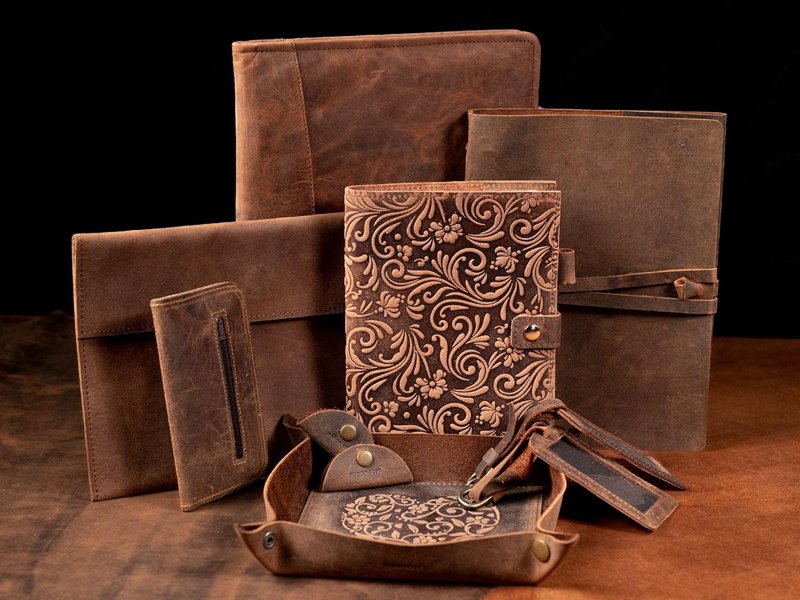
Conclusion
When deciding between full-grain and top-grain leather for your project, consider the priorities that matter most:durability, cost, aesthetic, and maintenance. Full-grain leather is perfect for high-end, long-lasting products, while top-grain offers a more affordable yet still durable and polished option.
If you’re ready to create your own leather products, whether it’s a custom bag, furniture piece, or jacket, reach out to Szoneier for bespoke leather goods tailored to your needs. Get in touch with us today for pricing and customization details.






